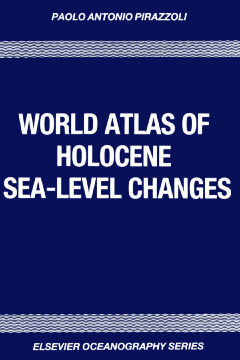
Additional Information
Book Details
Abstract
This timely study is concerned with the current record of sea-level changes during the past 10,000 years; their rates, and our ability to estimate these changes accurately. The author begins with an extensive introduction to the subject, covering the historical background and the possible causes of sea-level changes and the main methods used to reconstruct former sea-level positions. The second and main part of the Atlas provides a worldwide review of Holocene sea level changes by assembling some 800 local relative sea-level curves, deduced from field data from all parts of the world, and comparing these with over 100 curves predicted by geophysical models. This data is compiled in 77 regional plates, each containing 4-20 relative sea-level curves drawn to the same scale. These plates enable a visual assessment of geological trends in sea-level during the Holocene to be made.
Comparing this data with trends deduced from tide gauges and near-future trends predicted by climate models, should enable more accurate assessment of near future sea-level changes on a local scale. The regional plates are fully annotated with locations, authors' names, year of publication and some indicative values of the spring tidal range in the region, as well as an accompanying text of comments.
Finally, the author provides a state of the art review, proposes improvements in methodology and suggests directions for further study. An extensive bibliography of over 750 references, and two indexes complete the study. This comprehensive work contains data and interpretations of value to all those with an interest in regional geography, climatology, sea-level change, and environmental science.
Lee C. Gerhard
Overall, this book is a valuable library addition and a source for both information and references... I believe that all earth science libraries should have this volume for geologists and students of global climate change.
Geotimes
An extensive bibliography of over 750 references, a locality index, and an author index complete the book. Although locally significant changes in relative sea level rise can occur, depending on varying degrees of dewatering of different types of sediments and their depositional history, this book will provide a good overall guidance to evaluate the effects of overall subsidence and ice melting.
Geo-Marine Letters
The "Atlas" is a thorough and very useful compendium of existing data and, given the extensive bibliography, a good starting point for future research.
Geo-Marine Letters
The book should prove to be a valuable reference work for a wide variety of scientific pursuits involving coral reefs.
Reef Encounter/International Society for Reef Studies
This book is, of course, of the greatest importance for all studies related to coastal evolution and coastal stability. It is, therefore recommended to the members of the Neotectonics Commission as a standard reference for all kinds of studies related to coastal regions.
Bulletin Inqua Neotectonic Commission
This book provides and excellent and up-to-date document of global sea-level changes during the last 10,000 years. This will be a standard reference for all persons dealing with sea-level changes and coastal stability for years to come...Undoubtedly, the Atlas will become a "hit".
BOREAS
The "World Atlas of Holocene Sea-Level Changes" will be a widely used reference for the historical record of sea-level change and for the assessment of the impact of near-future sea-level change at the local scale, particularly in the context of global ("greenhouse") warming. Moreover, the volume provides an excellent general review of the nature of sea-level change that will be most useful for anyone dealing with the history of coastal zone - geologists, archeologists, paleoecologists, and historians.
Science
...a thoroughly researched and well produced document that will provide a very useful source of reference for many years to come.
The Holocene
